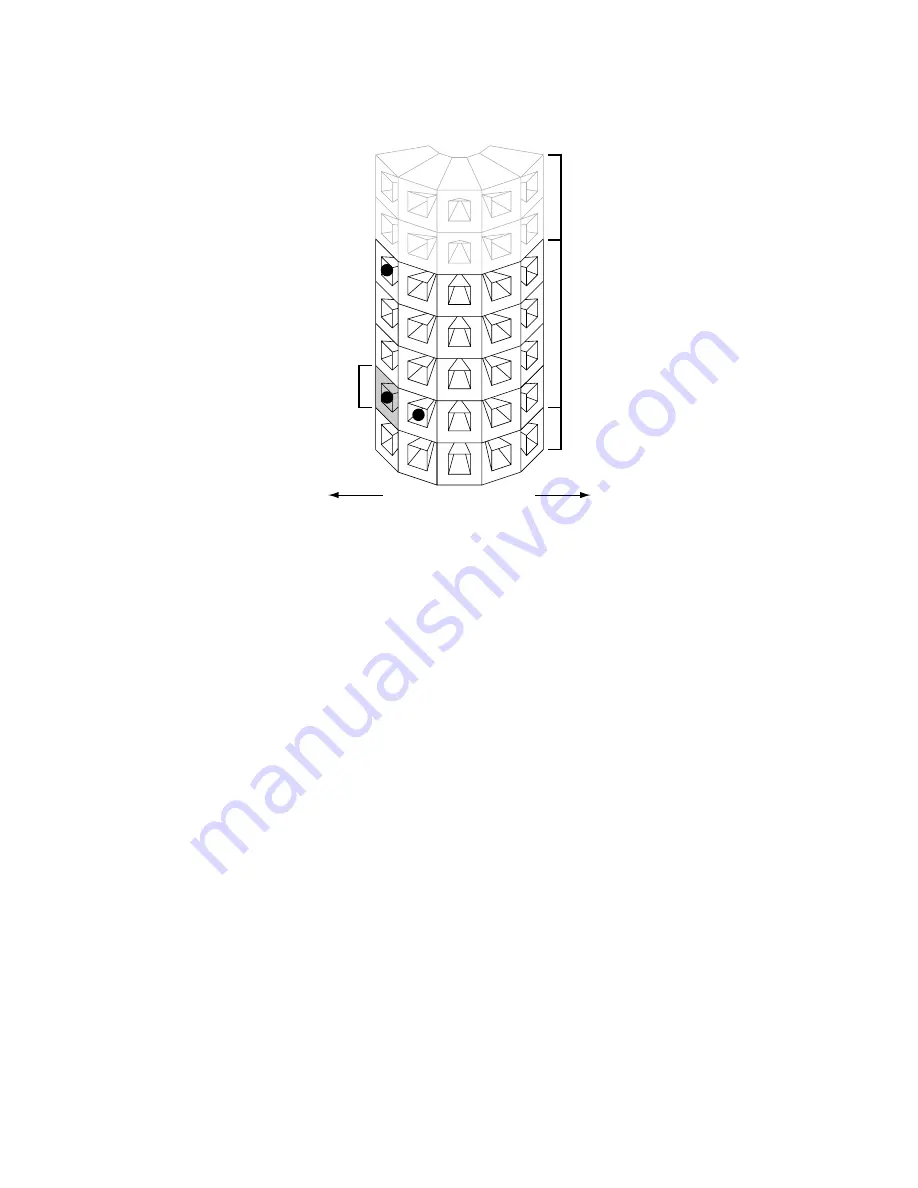
The first approach is appropriate when an array is already hung and listening tests show short throw levels to be
excessive. In this case, the user simply unplugs the KF750 that lies directly above the KF755 and points in the
direction where decreased output is desired. We have dubbed this array module the gap box. Unplugging the gap
box has little impact on the vertical performance of the individual array column; it merely decreases the output
of the array in that direction of radiation.
When even greater output reduction is required a second level of horizontal tapering can be achieved by
unplugging the top KF750 in the column that addresses the direction of interest. Eliminating both the gap box
and the top box in an individual column not only reduces the output of the column even more, it also expands
that column’s vertical coverage to more adequately address the increased vertical angle associated with closer
proximity to the array. In an extreme situation, increase the horizontal area of attenuated coverage by unplugging
the gap box in the second column in.
The second, more complex approach works best when the designer knows beforehand, either through experience
or calculation, that short throw levels in a particular venue will be excessive. In this case, amplification should be
zoned such that the problematic column can be controlled as a unit with the rest of the array remaining zoned in
rows as discussed above. This column can then be attenuated with far greater precision to suit the specific needs of
the situation.
18
Adjusting for excessive level in short throw sections
Gap box
20 KF750
5x KF755
10x KF755 inverted
For excessive level in short throw areas of a venue, turn off the gap box (1) for some attenuation (1.5 dB in this case).
For greater attenuation, also turn off the top box (2).
For a wider area of attenuated coverage, also turn off the gap box in the next column (3)
OFF STAGE
ON STAGE
2
3
1
Figure 8
Содержание KF750 Series
Страница 2: ......










































